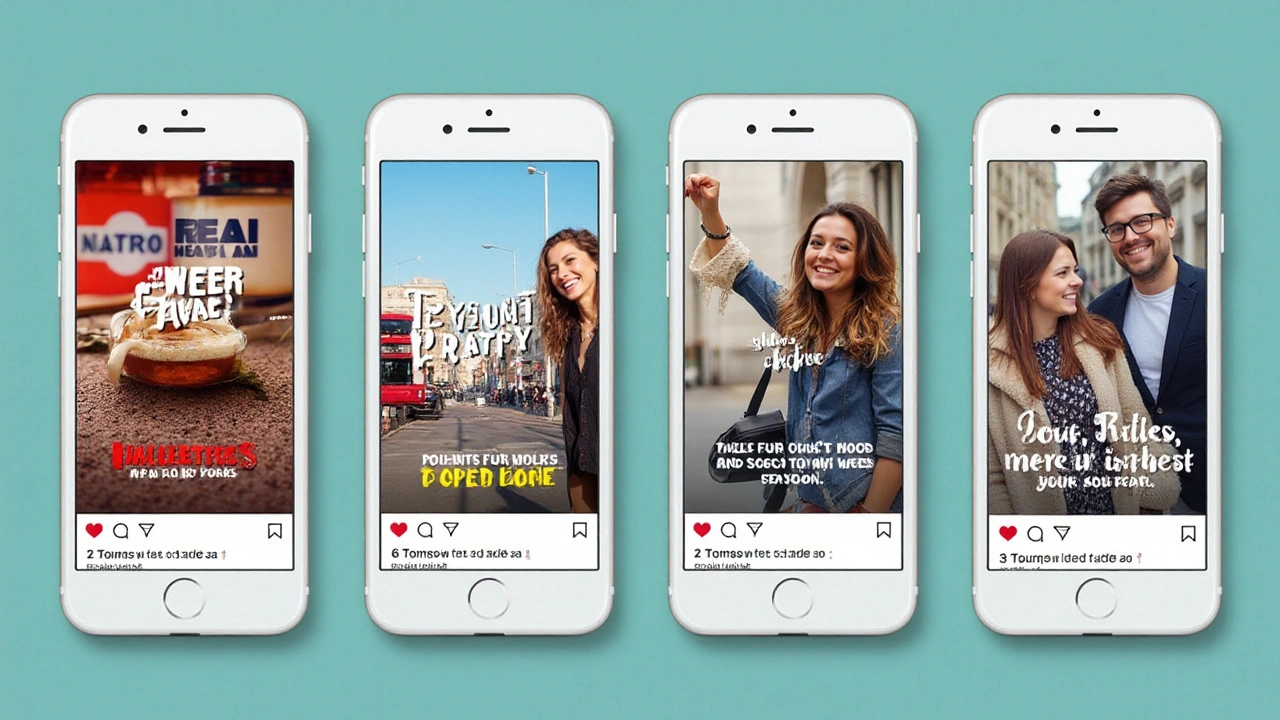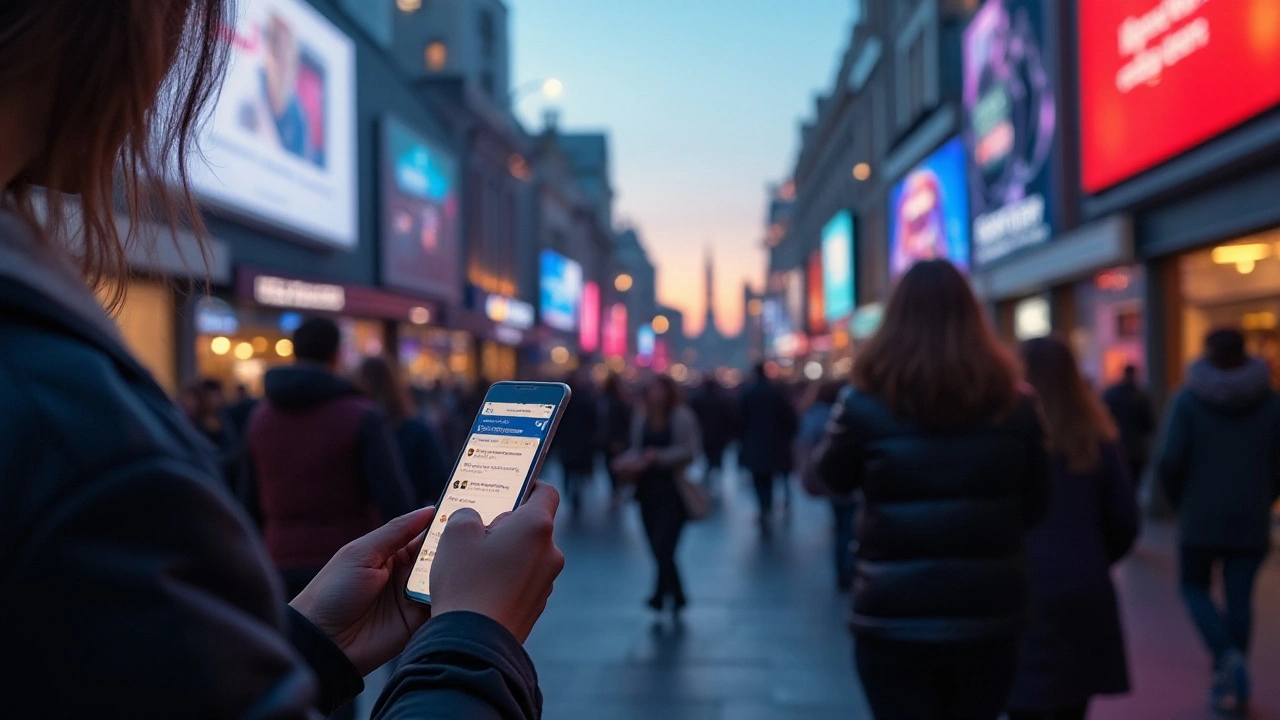Harnessing Social Media for Cutting-Edge Digital Marketing Strategies

The digital marketing sphere has undergone significant changes with the advent of social media, turning it into a powerful tool that brands can no longer afford to ignore. Platforms like Facebook, Instagram, and TikTok are not just for personal connections—they are dynamic spaces buzzing with brand activity, shaping how companies communicate with their audience.
For businesses, understanding the implications of social media on digital marketing means appreciating how it enables more targeted and personal advertising, fostering a level of consumer engagement that was previously unimaginable. By focusing on real-time interaction and genuine content, brands can now forge deeper connections with consumers, making social media an indispensable element of any comprehensive digital marketing strategy.
- Evolution of Social Media in Marketing
- Targeted Advertising and Customer Engagement
- Influencer Collaborations and Brand Authenticity
- Analyzing Social Media Metrics and Trends
- Effective Strategies for Maximum Impact
Evolution of Social Media in Marketing
Over the past decades, the landscape of social media has transformed radically, and with it, the strategies of digital marketing. Initially, platforms like Friendster and MySpace allowed individuals to connect on a personal level. Brands gradually realized these burgeoning networks presented a unique opportunity to reach their audience in more organic ways. By 2010, Facebook was rising quickly as the dominant force, not only connecting friends and family but turning into a fertile ground for businesses to engage with consumers directly. The era of basic banner ads was giving way to more sophisticated methods of marketing where content had to be relevant, interactive, and highly personalized.
As the 2010s progressed, social media platforms diversified radically. Visual-centric apps like Instagram and Snapchat introduced new dimensions of engagement via photos and stories. These platforms invited brands into consumer lifestyles in a non-intrusive way, allowing businesses to integrate into the fabric of daily life. For instance, Instagram's visual appeal prompted brands to focus on aesthetics, turning storytelling through imagery and video into a critical marketing tool. Then came TikTok, revolutionizing the scene with short, engaging content that demanded creativity and authenticity from brands trying to capture attention in the span of mere seconds.
The power of social media lies in its ability to target ads at a granular level. The early 2020s saw a shift towards more data-driven approaches where algorithms fine-tuned the delivery of content to consumers based on browsing habits, interactions, and likes. This precision targeting meant that advertisers could reach specific demographic groups, enhancing the potential for engagement and conversion. According to a report by Statista, in 2021, social media was responsible for an impressive 33% of total digital ad spending, signifying its crucial role in marketing budgets. This trend highlights the evolution from generic mass marketing to more personalized, data-focused approaches catered to individual user preferences.
"Social media has shifted from being an experiment in relationship building to becoming a vital component of any organization's marketing strategy, broadening the scope of engagement to be not just about reaching the maximum number of people, but about reaching the right people," noted Adam Mosseri, Head of Instagram.
The evolution isn't just about platforms; it's about integrating influencers into marketing campaigns, who brought about a cultural change in how brands connect with audiences. Influencers, with their authenticity and ability to connect with followers on a personal level, have emerged as pivotal players in rolling out product launches and promoting brand ethos.
To succeed in this ever-changing digital arena, marketers have learned to pivot swiftly, adopting strategies that align with these changes. Creating content tailored to fit different platform algorithms while remaining true to a brand's identity is an intricate dance but crucial for staying relevant. Thus, understanding the past evolution of social media in marketing is vital to anticipate future trends efficiently. As technology advances, predicting the next chapter in the social media marketing playbook becomes as important as embracing the current potential of these versatile platforms.
Targeted Advertising and Customer Engagement
Social media has revolutionized the way brands approach targeted advertising, making it an integral part of digital marketing strategies. Unlike traditional media, social platforms offer a treasure trove of data that allows businesses to tailor their marketing efforts with unprecedented precision. Today, advertisers can reach their specific audience segments based on demographics, interests, behaviors, and even purchasing history. This precise targeting capability has been made possible through algorithms and advanced data analytics, which analyze user actions to create detailed profiles. As a result, consumers are presented with more relevant advertisements, leading to higher engagement rates and better conversion statistics.
The beauty of social media is that it doesn't just allow for targeted outreach; it opens channels for ongoing customer interaction that can translate into long-lasting brand loyalty. Companies can now engage directly with their audience, nurturing communities around their products or services. This engagement is a two-way street – it provides brands with vital feedback while also granting customers a sense of belonging and influence. For instance, inviting customers to share their experiences or participate in polls increases interaction and shows that the brand values their opinions. According to a Nielsen report, 92% of consumers trust recommendations from individuals over brands, underscoring the power of engagement.
"Social media is not only more cost-effective but also more precise in reaching specific audiences than ever before," says Michael Stelzner, CEO of Social Media Examiner.
With platforms continually updating their algorithms and features, the landscape of targeted advertising is constantly evolving. Instagram's Shoppable Posts, Facebook's dynamic ads, and TikTok's Hashtag Challenges are just a few examples of innovative ad formats that engage users creatively while maintaining a promotional agenda. Such formats offer seamless shopping experiences directly on the platform, minimizing the hurdles between initial interest and final purchase. The integration of augmented reality (AR) in ads is another frontier, offering interactive experiences that captivate users and increase engagement metrics.
Enhancing Brand Visibility
Businesses aiming to boost their visibility must also respect the unique culture and norms specific to each social media platform. Posting the right type of content at optimal times greatly influences the reach and engagement of advertisements. Understanding these nuances requires constant learning and adaptation to trends. It’s no longer enough to passively post content; successful brands actively participate in conversations, harnessing tools such as Instagram Stories or LinkedIn articles to maintain visibility and relevance. A HubSpot study reported that businesses that are adept at using social media increase their sales by 57% faster than those that do not.
By investing time in building authentic relationships, brands can tap into the immense potential of social media. Effective digital marketing is increasingly defined by how well businesses leverage these platforms to drive engagement and deliver personalized experiences that resonate with their audiences. With the right strategy and a deep understanding of the social media ecosystem, businesses can not only reach but also enchant their customers, driving growth and visibility in this ever-competitive digital world.

Influencer Collaborations and Brand Authenticity
In today's digital landscape, influencer collaborations have emerged as a cornerstone for brands striving to establish authentic connections with their audiences. Social media influencers possess a unique ability to evoke trust and loyalty, thanks to their deeply personal interactions with followers. As consumers increasingly turn to social platforms for product recommendations, brands that leverage influencers are able to blend seamlessly into the fabric of everyday online experiences. This approach allows companies to introduce products in a way that feels organic, rather than overtly commercial. For instance, a skincare brand might partner with a well-regarded beauty influencer who can share their genuine experiences and demonstrate product usage in a storytelling format.
The rise of influencer marketing can be traced back to the growing consumer desire for authenticity over traditional advertising methods. Millennials and Gen Z, in particular, are drawn to relatable narratives over glossy marketing campaigns. Studies have shown that 63% of consumers trust influencers' opinions of products much more than what brands say about themselves. This statistic underscores the importance of creating genuine collaborations that highlight shared values between the brand and the influencer. Brands that choose influencers whose personal brand aligns with their own values and messaging often see the greatest impact.
However, influencer partnerships are not without challenges. It's essential for brands to ensure transparency and discern whether the influencer’s audience engagement aligns with their brand goals. Emphasizing authenticity doesn't mean resorting to shortcuts. Real influencers have genuine engagement and community rapport—not just high follower counts. Partnerships should articulate the brand’s message seamlessly while preserving the influencer's voice. A successful collaboration often involves creative freedom for the influencer, which can result in more engaging and credible content that resonates with the audience.
"The best influencer relationships bring an element of a co-creation that adds value to both the brand and the influencer's audience," suggests a spokesperson from a leading influencer management agency.In addition, brands must be vigilant about regulatory aspects of influencer marketing. Collabs must comply with guidelines set by bodies like the Federal Trade Commission (FTC), which requires clear visibility of sponsored content. This enhances transparency and maintains the trust between the influencer and their followers.
Moreover, the effectiveness of influencer collaborations can often be quantified through various metrics. Metrics such as engagement rates, follower growth, website traffic, and conversion rates can provide insights into the success of a campaign. Recent data from influencer marketing platforms suggests that businesses average a $5.20 return on investment for every dollar spent, indicating the potential financial benefits of such collaborations. Brands should utilize these insights to refine strategies and build long-term, impactful partnerships with influencers.
Analyzing Social Media Metrics and Trends
In the vibrant world of social media, decoding metrics is akin to understanding the pulse of your brand's digital presence. Each like, share, comment, and view tells a story—a narrative about your audience's preferences, behaviors, and perceptions. For digital marketers, tapping into these insights is crucial for crafting strategies that resonate and yield tangible results. But with the plethora of data available, it can often feel like navigating a labyrinth. So, how does one make sense of this maze and use it to their advantage?
Choosing the right tools for metric analysis is the first critical step. Platforms like Facebook Insights, Google Analytics, and Hootsuite offer valuable dashboards that translate raw data into sensible trends and patterns. However, it's essential not just to focus on vanity metrics, such as likes and followers, but to dig deeper into engagement metrics. These include the average duration of video views, click-through rates, and the sentiment behind comments. Garnering insights from these data points can illuminate what content staples are, showing which posts ignite the most conversations and engagement. A pragmatic approach involves setting clear, measurable objectives beforehand—like increasing your content's reach or boosting interaction rates—to evaluate the success of your campaigns accurately.
Another integral part of analyzing social media is trend spotting. Not just recognizing established trends, but anticipating what's on the horizon can give brands a competitive edge. Keeping a keen eye on emerging platforms or newly popular content formats can often lead to first-mover advantages. For instance, the rise of TikTok as a marketing platform is a testament to how effectively early adoption strategies can pay off. Monitoring hashtags and influencers revealing novel content ideas or styles can also point toward future shifts. As Thomas Friedman, renowned columnist, once said, "The world is flat," it suggests that in today’s interconnected network, subtle changes in user behavior can ripple across the globe, swiftly creating new norms.
To illustrate, consider the influencer impact on digital marketing. An influencer's engagement rate—calculated by the percentage of followers that interact with their content—can provide insights into trends in content consumption. This engagement often dictates which products or services gain traction in the market, steering consumer preference and, ultimately, brand strategy. Successful digital marketing lies in understanding these behaviors, re-evaluating them regularly, and adapting strategies promptly to maintain relevance and appeal.
Finally, using metrics to refine online strategies relies on constant adaptation and innovation. By regularly analyzing detailed performance reports and audit results, brands can tweak their approaches to optimize spend and enhance returns. The approach might involve reassessing the timing of posts, considering varied content types, or even rethinking audience targeting based on demographic shifts discovered through analytic insights. When wielded effectively, the insights gleaned from social media metrics offer a powerful toolset that guides marketers in crafting not just campaigns, but meaningful digital experiences that foster lasting consumer relationships.

Effective Strategies for Maximum Impact
When diving into the world of digital marketing on social media, it’s crucial to arm oneself with strategies that truly capitalize on the platform's unique qualities. First and foremost, understanding your audience is key. This means knowing their preferences, what type of content resonates with them, and the platforms they frequent the most. Crafting a strategy based on this knowledge can significantly boost brand interaction. One must never underestimate the power of well-curated content. Content tailored to suit a brand's voice while being relatable to the audience often results in higher engagement and shares, expanding reach organically.
Creating a content calendar is another strategy worth its weight in gold. Regular, consistent posts keep audiences engaged and returning for more. Balance this routine with spontaneous and current event posts to keep the feed lively and relevant. Leveraging analytics tools is also crucial; they help track how posts are performing and what kind of posts ignite user engagement. Adjust your strategy accordingly for those campaigns that underperform, and double down on what works. Tools like Google Analytics and built-in platform insights can be indispensable allies in this regard.
Don't forget the mighty power of influencer collaborations. Partnering with influencers whose followers align with your target market can create a surge of new interest in your brand. It can be particularly effective because these influencers hold their audience's trust, making their endorsements valuable. Similarly, paid ads are a smart way to ensure your content reaches a wider but still targeted demographic. They offer precise control over who sees your content based on location, behavior, and interest.
Engaging Through Stories and Live Content
Platforms like Instagram and TikTok allow brands to explore Stories and live streaming features, giving an opportunity to create more authentic connections. These formats are not just about showcasing well-polished products; they bring a brand closer to its followers through behind-the-scenes content, Q&A sessions, or giveaways. This level of transparency can be an endearing quality for audiences. As one social media expert succinctly put it, “Going live is akin to inviting your audience over for coffee, where unedited, genuine interaction creates bonds.”Measuring success in digital marketing is a continual process involving trial and error. It requires patience and persistence but can yield great rewards. Building genuine relationships through social media doesn’t happen overnight; however, once established, these bonds often translate into loyal customers and brand advocates. Implementing these strategies with authenticity as the cornerstone can help brands achieve maximum impact in today's competitive digital marketing landscape.



